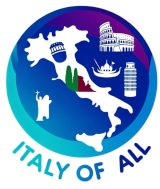The province of Trieste, located in the northeastern part of Italy, is a fascinating region characterized by its unique geopolitical history, vibrant cultural scene, and strategic maritime location. Nestled at the head of the Gulf of Trieste on the Adriatic Sea, this area serves as a bridge between Western and Eastern Europe, reflecting a rich blend of Italian, Slavic, and Germanic influences.
Geographically, Trieste is bordered by Slovenia to the east and the Adriatic Sea to the south. Its terrain includes a rugged coastline, steep limestone cliffs, and a narrow coastal strip that extends into the hinterland. The Carso plateau, with its rocky landscapes and Mediterranean scrub, offers distinctive flora and fauna, along with phenomena such as caves and sinkholes, which are popular with speleologists and nature enthusiasts.
Historically, Trieste has a layered history, having been influenced by various empires and cultures. It was a prosperous port under the Austro-Hungarian Empire, which left a lasting architectural and cultural impact. After World War I, Trieste became part of Italy, and its status was disputed until the establishment of the Free Territory of Trieste after World War II; it was officially reabsorbed into Italy in 1954. The city’s historical narrative is evident in its grand squares, such as Piazza Unità d’Italia, and landmarks like Miramare Castle and the Roman Theatre.
Culturally, Trieste is known for its literary heritage, having been the home or point of inspiration for writers such as James Joyce, Italo Svevo, and Umberto Saba. The city hosts numerous cultural events, including the Trieste Film Festival, which emphasizes Central and Eastern European cinema, and the Barcolana regatta, one of the largest sailing races in the world. The mix of cultures is also evident in the local dialects, traditions, and the cosmopolitan vibe of the city.
Cuisine in Trieste reflects its multicultural influences, featuring a mix of Italian, Slovenian, and Austro-Hungarian flavors. Typical dishes include “jota” (a hearty bean and sauerkraut soup), “sardoni barcolani” (breaded and fried sardines), and Viennese-inspired pastries and coffeehouse culture that celebrates the city’s love for coffee.
Economically, Trieste’s economy is largely driven by its port, one of the largest in Italy, which plays a crucial role in maritime trade and logistics. The city also hosts several international research institutions, such as the International Centre for Theoretical Physics (ICTP) and Elettra Sincrotrone Trieste, making it a hub for scientific research. Additionally, Trieste has a developing tourism sector, attracted by its historical sites, cultural festivals, and natural beauty.
Despite challenges such as economic diversification beyond the port activities and managing its multicultural identity, Trieste continues to leverage its unique position as a cultural and economic crossroads in Europe.
Overall, the province of Trieste offers a compelling blend of history, culture, and strategic economic importance. Its ongoing efforts to integrate its diverse cultural heritage and bolster its economic prospects ensure its continued significance in Italy’s and Europe’s socio-economic landscape.
Comuni in Trieste Province:
